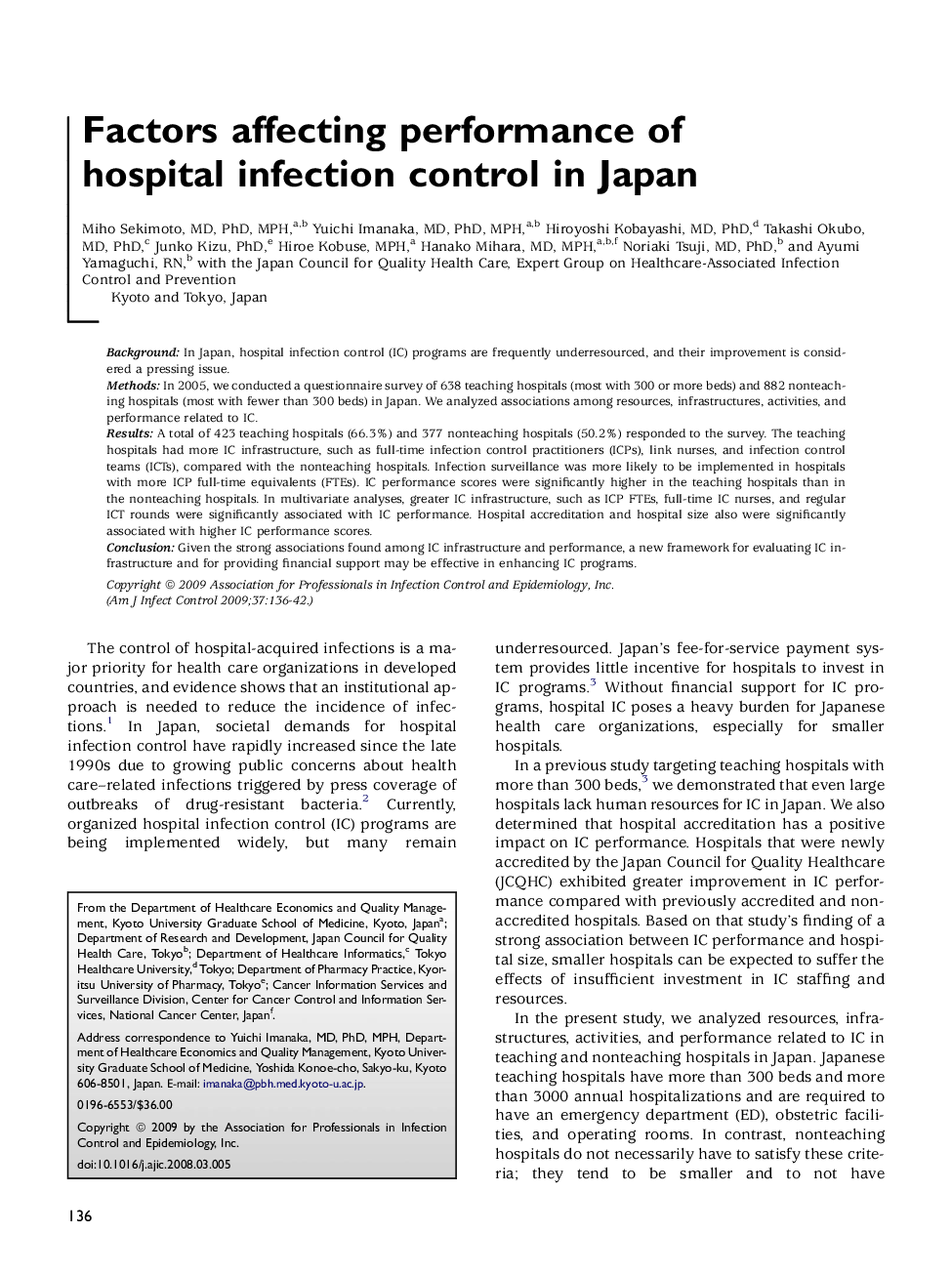| Article ID | Journal | Published Year | Pages | File Type |
|---|---|---|---|---|
| 2640186 | American Journal of Infection Control | 2009 | 7 Pages |
BackgroundIn Japan, hospital infection control (IC) programs are frequently underresourced, and their improvement is considered a pressing issue.MethodsIn 2005, we conducted a questionnaire survey of 638 teaching hospitals (most with 300 or more beds) and 882 nonteaching hospitals (most with fewer than 300 beds) in Japan. We analyzed associations among resources, infrastructures, activities, and performance related to IC.ResultsA total of 423 teaching hospitals (66.3%) and 377 nonteaching hospitals (50.2%) responded to the survey. The teaching hospitals had more IC infrastructure, such as full-time infection control practitioners (ICPs), link nurses, and infection control teams (ICTs), compared with the nonteaching hospitals. Infection surveillance was more likely to be implemented in hospitals with more ICP full-time equivalents (FTEs). IC performance scores were significantly higher in the teaching hospitals than in the nonteaching hospitals. In multivariate analyses, greater IC infrastructure, such as ICP FTEs, full-time IC nurses, and regular ICT rounds were significantly associated with IC performance. Hospital accreditation and hospital size also were significantly associated with higher IC performance scores.ConclusionGiven the strong associations found among IC infrastructure and performance, a new framework for evaluating IC infrastructure and for providing financial support may be effective in enhancing IC programs.
